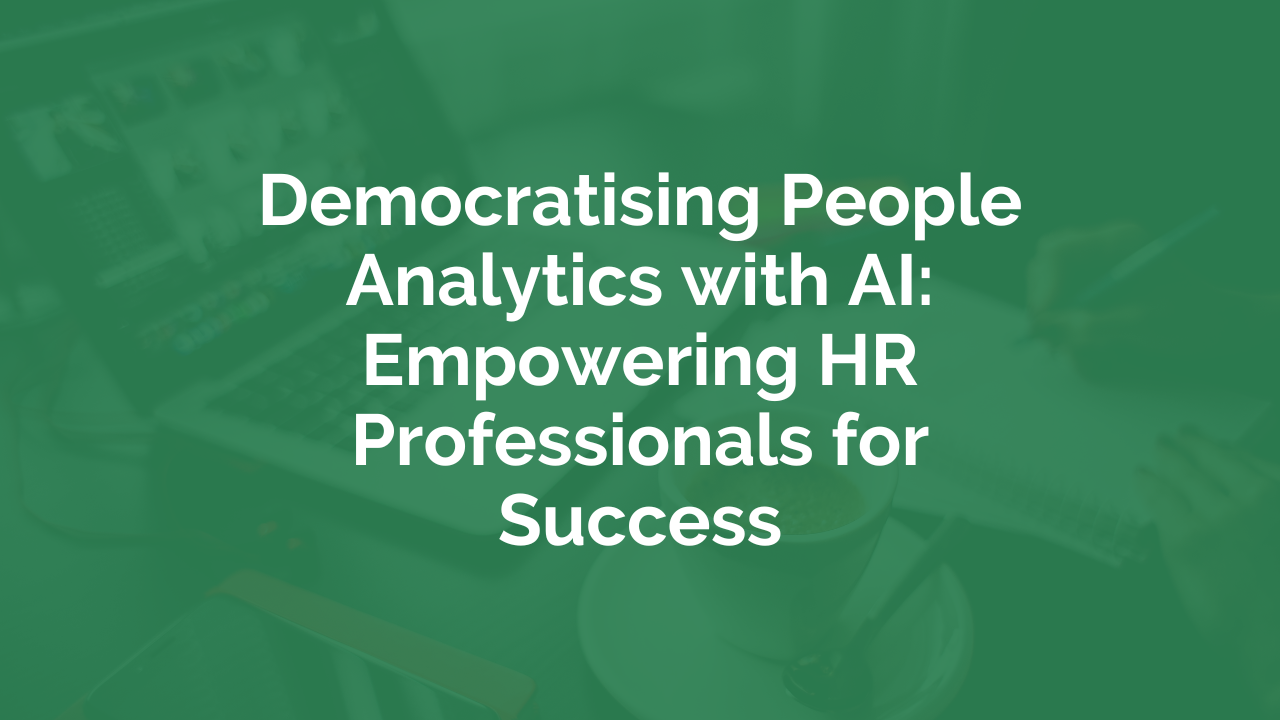Stay ahead in the dynamic field of HR by tuning into the Digital HR Leaders podcast, where David Green, alongside industry experts such as Diane Gherson, Dave Ulrich and many others share key insights on how the field is evolving. In this blog we reflect back on the discussions we’ve had over the last year and pull out some of the key themes we covered. The discussions revolved around transitioning to skills-based talent approaches, HR's role in ensuring stability amidst uncertainty, and bridging the gap between employer and employee needs. Furthermore, essential HR skills for the future are emphasised, such as business acumen and data-driven decision-making, along with the evolving role of HR in aligning strategies with business outcomes.
Read MoreThe introduction of AI, including generative language models like ChatGPT, has brought about significant advancements in the field of HR. It is completely changing the HR landscape as we know it, helping HR professionals streamline their tasks and enhance their efforts and decision-making capabilities in areas such as L&D, recruitment, performance management, employee engagement, onboarding, and people analytics.
Read MoreAs human beings, our everyday decisions are based on the way we interpret and act upon our emotions. These emotions, opinions, attitudes, and beliefs are the sentiment that drives our behaviours. And as HR Leaders and professionals, understanding the sentiment of our employees is key to ensuring a successful and dynamic workplace.
Read MoreLike all aspects of modern business, technology is changing how we operate and function, and if you're not leveraging it to your advantage, you will be left behind with the dust. As our 2022 Insight222 People Analytics Trends report "Impacting Business Value: Leading Companies in People Analytics" highlights, people analytics as a function has a stronger influence on strategic HR decisions.
Read MoreIn today's business landscape, relying on intuition or personal biases for strategic decision-making in HR is no longer sustainable. While pre-pandemic times saw a gradual shift towards a data-driven HR function, the COVID-19 pandemic has accelerated the need for HR departments to become more systematic and aligned on data-driven capabilities.
Read MoreSince ChatGPT was launched in November 2022, there has been a surge of interest and some concern about the potential impact of GPT and Generative AI models on business as well as on HR and workers. One recent report by Goldman Sachs suggests that AI could replace the equivalent of 300 million full-time jobs, as well as a quarter of work tasks in the US and Europe. However, the same report also predicts that, similar to previous industrial revolutions, there will be new jobs and a productivity boom.
Read MoreOne of the most impressive examples of how to scale people analytics successfully comes from Capital One. During his five-year tenure as Head of People Strategy and Analytics at Capital One, from 2017 to 2022, Guru Sethupathy quadrupled the size of the function to around a hundred people and delivered significant value with his team to the business as well as Capital One’s Associates. Guru shared a case study of this transformation in Excellence in People Analytics and an episode of the Digital HR Leaders podcast: How Capital One Delivers Value at Scale with People Analytics.
Read MoreHR should be a key partner in shepherding organisations towards bias-free decision making, to ensure optimal outcomes for both employees and employers. It is the position of these authors that data and Machine Learning (ML) (i.e., a subset of Artificial Intelligence) can play a significant role in enhancing the conditions for minimising bias in decision making at all stages of the employee lifecycle.
Read MoreArtificial Intelligence (AI) in HR is the wave of the future. AI-enabled tools and technologies can be used to streamline processes, automate data management, and power people analytics. HR Leaders and professionals are quickly adopting the power of AI and data-driven insights to make more informed decisions when hiring, managing performance data, and developing better employee retention strategies.
Read MoreDo you remember the spreadsheet? Back in the day, it was HR’s essential tool. Attendance data and productivity data, and benefits enrollment were all kept on individual spreadsheets on someone’s computer to use for all HR decision-making. The data was collected manually and from people of various backgrounds and training. Plus, these spreadsheets were susceptible to unwanted exposure or someone unintentionally corrupting the information, making it difficult to ensure data quality.
Read More









